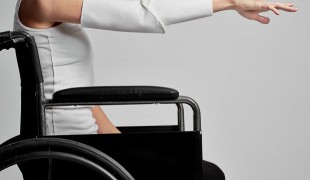- 14519
- 591
- 31
- 22
- 0
- Help Ukraine
About the solution
Kathy was always into fashion, but she couldn’t find appropriate designer clothing for her.
“We would go to different stores, and it would be a challenge. Just finding the proper clothes that fit. Little people, as you know, we have big bottoms. And because we have big bottoms, it was hard to find pants and jeans to get over our bottoms. You would have to go up an extra size, which was a size you really didn’t need. . . . Because they make clothes for average-size people, the taller the person is, the wider the leg is,” creating more problems, she said in a Washington Post interview.
Convinced that custom clothes shouldn’t have to be the only option, Woods ultimately took her idea for a ready-to-wear line for people of short stature to the incubator Fashion Business Inc., which focuses on helping women and members of other minority groups develop their ideas for fashion companies. And working with a designer, Woods rolled out her first line last year, focusing on providing high-quality basics for women.
Adapted from: https://www.washingtonpost.com/news/act-four/wp/2015/02/18/for-people-wi...
More info: http://www.kathydwoodsstore.com/
What about you, do you have any solutions? Please share them with the Patient Innovation community!
This solution shall not include mention to the use of drugs, chemicals or biologicals (including food); invasive devices; offensive, commercial or inherently dangerous content. This solution was not medically validated. Proceed with caution! If you have any doubts, please consult with a health professional.
DISCLAIMER: This story was written by someone who is not the author of the solution, therefore please be advised that, although it was written with the utmost respect for the innovation and the innovator, there can be some incorrect statements. If you find any errors please contact the patient Innovation team via info@patient-innovation.com
-
-
625
-
0
-
9589

Designer creates clothing line for disabled people
(SELF)-CARE: DRESSING: Dressing independently.
MOVING IN A WHEELCHAIR: Moving using a wheelchair.
Hemiplegia
Paralysis
Spinal Cord and Nerve Root Disorders
Muscular Dystrophy
Cerebral Palsy
Body-Worn solutions (Clothing, accessories, shoes, sensors...)
Muscle cramps or spasms
Difficulty coordinating movements
Stiffness or rigidity (difficulty moving)
Paralysis of the legs and lower body
Muscle weakness
Promoting self-management
Promoting inclusivity and social integration
General and Family Medicine
Medical Genetics
Neurology
Orthopedics
Rheumatology
United Kingdom
-
-
-
559
-
0
-
7565

Grandmother creates clothing line inspired by granddaughter with Down Syndrome
(SELF)-CARE: DRESSING: Dressing independently.
CAREGIVING
Down Syndrome (Trisomy 21)
Neuromuscular Disorders
Body-Worn solutions (Clothing, accessories, shoes, sensors...)
Difficulty coordinating movements
Confusion
Sleep disturbances
Anxiety
Promoting self-management
Enhancing Mental Health
Caregiving Support
Medical Genetics
Neurology
Pediatrics
United States
-
-
-
954
-
0
-
20817

System to track autistic children
CAREGIVING
COMMUNICATION: Communicating, whether by speaking, listening, or other means
Social interaction
Autism
Assistive Daily Life Device (to help ADL)
Body-Worn solutions (Clothing, accessories, shoes, sensors...)
App (Including when connected with wearable)
Anxiety
Difficulty concentrating or making decisions
Social withdrawal or isolation
Restlessness or feeling slowed down
Loss of interest or pleasure in activities (anhedonia)
Promoting self-management
Managing Neurological Disorders
Preventing (Vaccination, Protection, Falls, Research/Mapping)
Caregiving Support
Child and Adolescent Psychiatry
Medical Genetics
Neurology
Pediatrics
Psychiatry
Israel
-
 en
en